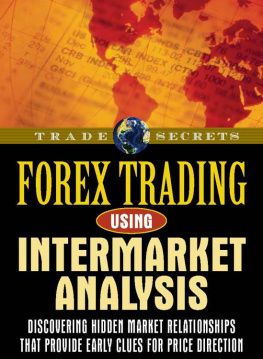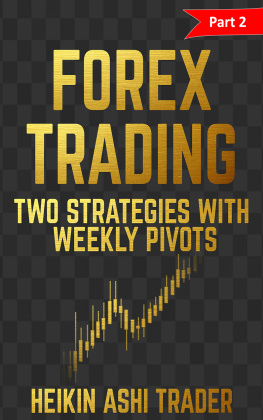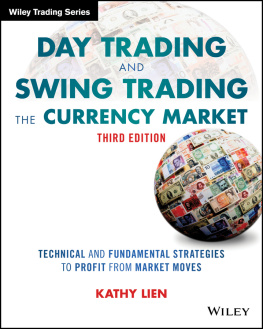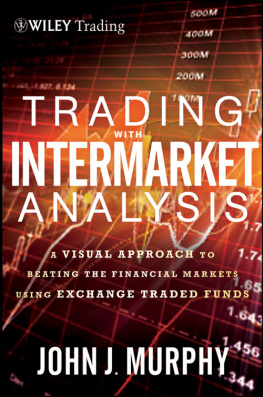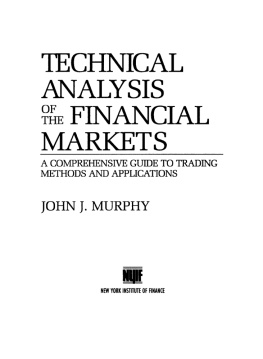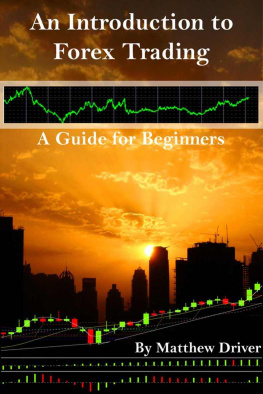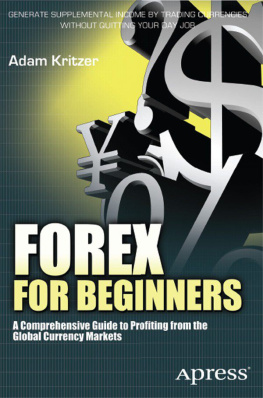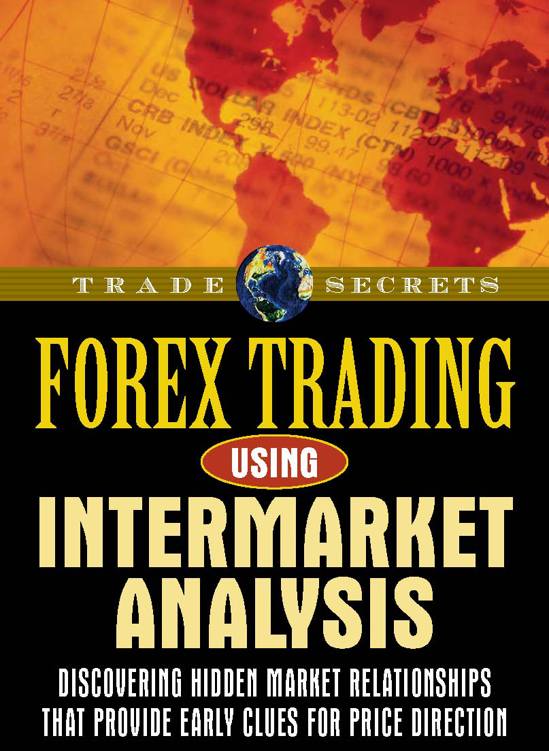discovering hidden Market reLationships that provide earLy cLues For price direction
Louis B. MendeLsoh n Foreword By darreLL r. JoBMa n

MarketpLace Books coLuMBia, MaryLand


Copyright 2006 by Market Technologies, LLC. All rights reserved. Reproduction or translation of any part of this work beyond that permitted by Section 107 or 108 of the 1976 United States Copyright Act without the permission of the copyright owner is unlawful. Requests for permission or further information should be addressed to the Permissions Department at Marketplace Books .
VantagePoint Intermarket Analysis Software is a trademark of Market Technologies, LLC. Synergistic Market Analysis and Hurricaneomic Analysis are service marks of Louis B. Mendelsohn. All other trademarks, service marks, or registered trademarks are the property of their respective owners. Other names, designs, titles, words, logos, or phrases in this publication may constitute trademarks, service marks, or trade names of other entities that may be registered in certain jurisdictions.
This publication is designed to provide accurate and authoritative information and the views and opinions of the author in regard to the subject matter covered. It is sold with the understanding that neither the publisher, copyright holder, nor the author is engaged in (1) providing commodity trading advice based on, or tailored to, the commodity interests or cash market positions or other circumstances or characteristics of any particular client, or (2) rendering investment, legal, accounting, or other professional services. If trading or investment advice or other expert assistance is required, the services of a competent and appropriately licensed person should be sought.
From a Declaration of Principles jointly adopted by a Committee of the American Bar Association and a Committee of Publishers.
This book, along with other books, is available at discounts that make it realistic to provide them as gifts to your customers, clients, and staff. For more information on these long lasting, cost effective premiums, please call us at 800-272-2855 or e-mail us at sales@traderslibrary.com.
ISBN 1-59280-295-8
Printed in the United States of America. 1 2 3 4 5 6 7 8 9 10
ConTenT s
ForeWord ix
PreFaCe xV
inTrodUCTion xix
Chapter 1 WHaT is Forex? 1
If you have traveled internationally, you may already know something about the forex market, todays hottest marketplace. Discover why you might want to trade forex.
Chapter 2 THe Forex markeTPlaCe 11
The forex market is the worlds largest marketplace, dwarfing all other markets combined. See how forex grew so large and how you can participate.
Chapter 3 FUndamenTals and Forex 21
Forex traders can get plenty of information, sometimes so much that it can be hard to sift through it all. Here are some reports a forex trader needs to consider.
Chapter 4 aPPlying TeCHniCal analysis To Forex 35
With fundamental information overwhelming, many forex traders analyze price action in charts. Chart patterns and indicators have shortcomings, but see how predictive moving averages can help with market forecasting.
vii
Chapter 5 inTermarkeT analysis oF Forex markeTs 49
What happens in one market is influenced by what happens in a number of related markets. Discover why single-market analysis should give way to intermarket analysis in todays global marketplace, especially in forex markets, which are ideally suited for this type of analysis.
Chapter 6 Using neUral neTWorks To analyZe Forex 63
With so many fundamentals and so much influence from related markets, its hard to see all the patterns and relationships in the forex market. Find out how neural networks can uncover hidden patterns in data and select the best to make short-term market forecasts.
Chapter 7 TeCHniCal TaCTiCs For Trading Forex 71
Once you understand how the forex market works and the basics of technical analysis, you are ready to put theory into practice. Here are a few more practical tips and chart examples to help you apply your knowledge to actual trading.
Chapter 8 WaVe oF THe FUTUre: synergisTiC markeT analysis 87
Using only one approach to trade no longer works in todays global markets. Successful trading requires the synthesis of technical, intermarket and fundamental approaches.
Trading resoUrCe gUide 93
aBoUT THe aUTHor and markeT TeCHnologies, llC 105
FOREWOR D
ForeWor d
in THe early 1980s, as the editor-in-chief of Commodities magazine, I was privy to a number of different trading ideas and techniquesso many, in fact, it was difficult to determine which was best or sometimes which had merit. This was during the heyday of innovations in the futures markets with the introduction of the cash-settlement concept in eurodollar futures, futures on broad-based stock indexes, crude oil futures, the pilot program for options on futures, and a number of other new contracts in areas where futures and options did not exist before. It also was the period when the personal computer was introduced and trading software was a new market analysis tool.
Inevitably, the developments in futures trading and in computerized market analysis using trading software began to come together, and it became obvious that the magazine needed to devote a lot more space to this subject. The problem was finding authors with actual trading experience who could explain the value of using this new computer technology for market analysis to readers without an academic background in computer science.
In early 1983 I received an article from Lou Mendelsohn. Lou and I did not know each other. He had a message about trading software that he was willing to share, and he knew that Commodities was the best way to reach a broad audience of futures traders. I just happened to be looking for good articles on that subject. What Lou submitted contained solid information on this new technology, and as a bonus, his article was well written. No one on the magazines staff could have written such an article at that point because no one had the trading experience nor the knowledge of computers and trading software that Lou provided.
His first article entitled, Picking Software Programs: Know Their Limitations, appeared in the May 1983 issue of Commodities . This article compared analysis software and system software in a logical,
Xi
sensible way. At that time Lou recommended at least a 48-kilobyte computernot the megabytes or gigabytes that are common today evidence that this was a time when many traders were just learning how to use personal computers.
A second article, entitled History Tester Important Factor in Software Selection, appeared in the July 1983 issue of Commodities . Lou emphasized the need for a history tester to compare the performance of different trading strategies and to have standardized performance reports so traders could make accurate comparisons of the results. Today we know about net return per trade, drawdowns, and all the other aspects of performance provided by software programs, but Lous implementation of strategy back-testing in software for the personal computer was the first in the financial industry, long before TradeStation and other competing software programs appeared on the scene.

